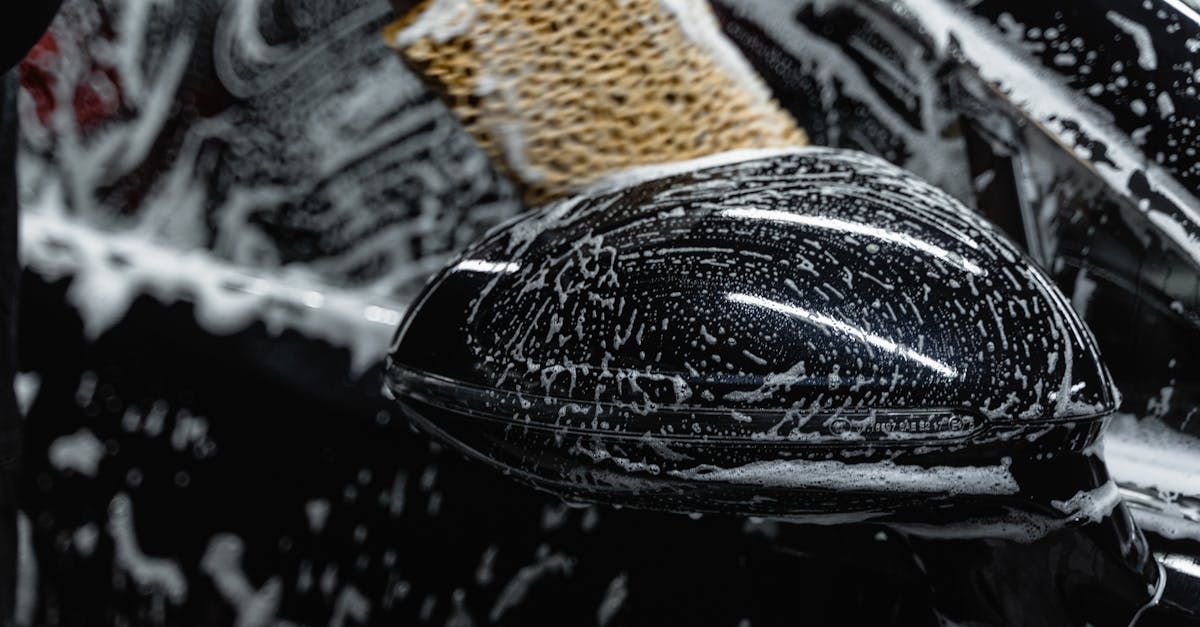
Common Mistakes to Avoid When Conditioning Leather Seats
Table Of Contents
Neglecting to Condition Leather
Regular maintenance is essential for keeping leather seats in optimal condition. Many car owners overlook the importance of conditioning, which can lead to dullness and a loss of the leather's natural oils. As the material dries out over time, it becomes more susceptible to wear and tear, leading to cracks and flaking that detract from the overall appearance and comfort of the vehicle. Simple conditioning treatments can help restore moisture and elasticity, making a significant difference in the longevity of the leather.
Failing to condition leather seats not only impacts their aesthetic appeal but also affects their durability. Leather requires regular nourishment to prevent it from becoming stiff or brittle. Without this care, small imperfections may develop over time, potentially leading to more extensive damage that requires costly repairs. Investing time in conditioning your leather seats ensures they remain soft, supple, and visually appealing for years to come.
The Benefits of Conditioning
Conditioning leather seats regularly can significantly enhance their appearance and longevity. This process replenishes the natural oils that keep the leather supple, preventing it from becoming dry and cracked. Well-conditioned leather maintains its rich colour and texture, ensuring that the seats continue to look premium and inviting.
Furthermore, conditioning acts as a barrier against everyday wear and tear. It helps in repelling dirt and stains, making cleaning much easier. By using a quality leather conditioner, owners can create a surface that stands up to spills and other potential damages, thus prolonging the life of the leather upholstery in their vehicles.
Using Harsh Cleaners
Choosing the right cleaning products for leather upholstery is crucial. Many consumers unknowingly opt for harsh cleaners that contain strong detergents or solvents. These substances can strip the leather of its natural oils, leaving it dry and prone to cracking. Additionally, they can create a dull appearance, detracting from the leather's inherent beauty.
It is essential to read labels carefully and select products specifically designed for leather care. Gentle cleaners that are pH-balanced can effectively remove dirt and stains without causing damage. By employing the right products, the integrity of the leather is maintained while enhancing its longevity and preserving its luxurious feel.
Consequences of Chemical Damage
Harsh cleaners often contain powerful solvents and chemicals that can strip the natural oils from leather. This can lead to a variety of issues, including dryness and brittleness. Once these oils are compromised, the leather becomes less flexible. Over time, this can result in cracking and premature wear.
Chemical damage can also lead to discolouration, altering the appearance of the leather seats. Stains may form that are difficult, if not impossible, to remove. The luxurious look and feel of leather can be entirely diminished, affecting not only the aesthetic but also the overall value of the vehicle's interior.
Not Protecting Against UV Damage
Leather seats are particularly vulnerable to ultraviolet (UV) radiation from the sun. Over time, exposure to UV rays leads to fading and cracking of the leather, significantly impacting the aesthetic appeal and longevity of the material. Even if the leather appears to be in good condition initially, continuous sun exposure can result in irreversible damage, making protection crucial.
To guard against this, applying a UV protectant specifically formulated for leather is essential. Regularly treating the seats with such products helps create a barrier against harmful rays. Additionally, utilising sunshades when parking outdoors and ensuring vehicles are parked in shaded areas can reduce direct exposure. These practices contribute to maintaining the leather's richness and resilience, extending its lifespan.
Preventing Fading and Cracking
Direct exposure to sunlight can lead to significant damage to leather seats over time. Prolonged UV exposure may cause the leather to fade, losing its vibrant colour and overall appeal. Additionally, the high temperatures associated with sunlight can lead to the material drying out, which in turn increases the risk of cracking. It is essential to be proactive in protecting leather from these damaging effects.
Utilising a UV protectant designed specifically for leather can help maintain its appearance and integrity. These products create a barrier against harmful rays while also conditioning the leather, preventing it from losing moisture. Regular application, especially in vehicles that are often parked outdoors, can significantly extend the lifespan of the seats. Taking these simple steps can keep leather looking fresh and new for years.
FAQS
Why is it important to condition leather seats?
Conditioning leather seats helps to maintain their suppleness, prevent cracking, and enhance their overall appearance, ensuring longevity and comfort.
What are the consequences of using harsh cleaners on leather?
Harsh cleaners can strip the natural oils from leather, leading to dryness, fading, and even irreversible damage to the material.
How often should I condition my leather seats?
It is generally recommended to condition leather seats every 6 to 12 months, but the frequency can depend on factors such as climate and usage.
What can I do to protect my leather seats from UV damage?
To protect against UV damage, consider using a UV protectant spray specifically designed for leather, and park your vehicle in the shade whenever possible.
Can I use regular household cleaners on my leather seats?
No, regular household cleaners often contain chemicals that can damage leather. It’s best to use products specifically formulated for leather care.
Related Links
Best Practices for DIY Leather Conditioning in CarsEssential Techniques for Effective Leather Conditioning in Your Car